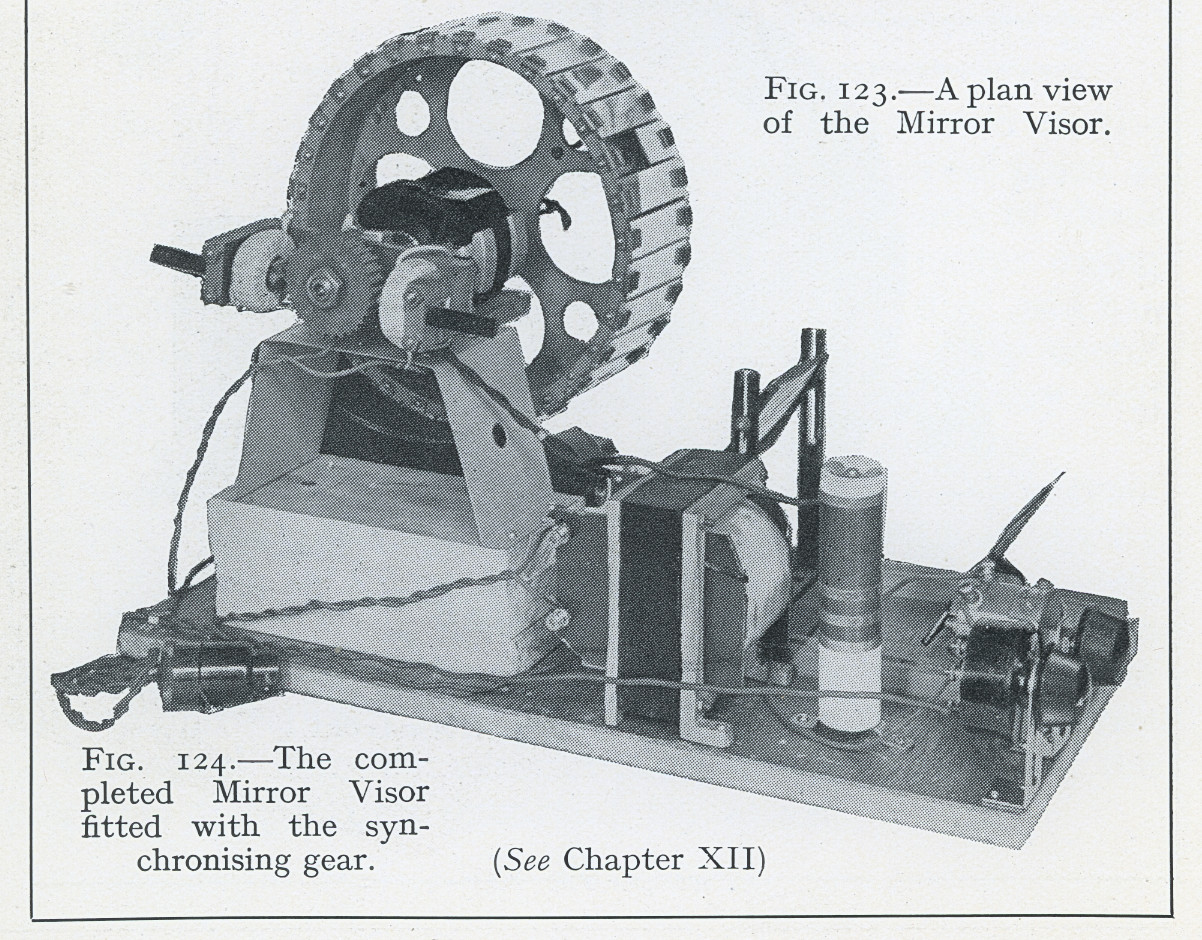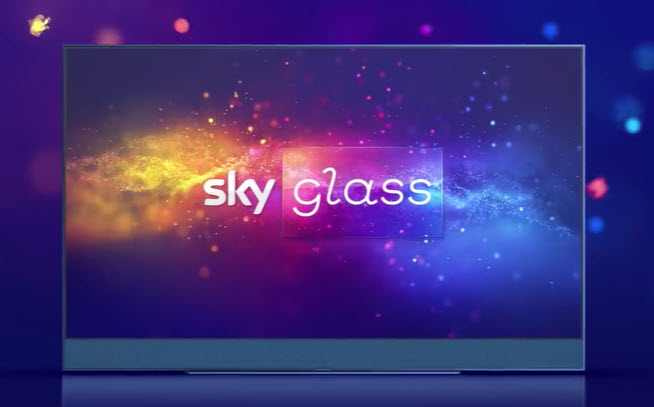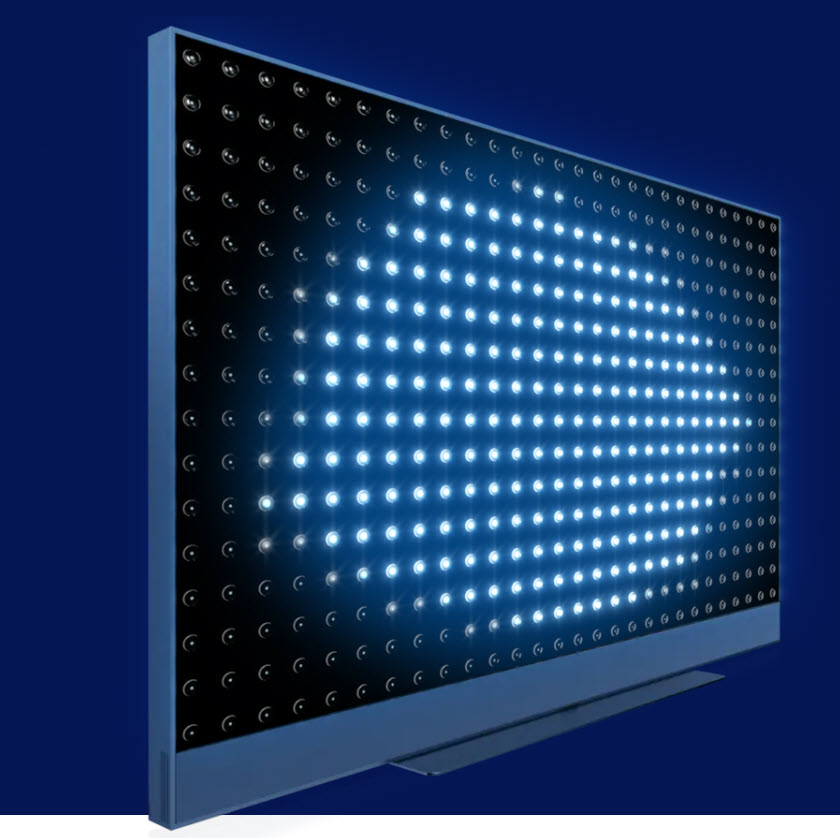Yesterday, Comcast’s UK subsidiary, Sky UK, released its new Glass TV. But is it a TV? One TV-focused website said ‘These are fairly conventional TVs’. I beg to disagree.

Since the start of the TV industry, a disconnection between the image source and the display was part of the deal. The ‘tele’ part of the name comes from the greek ‘distant’. The German word for a TV is fernseher or ‘far viewer’ (which does make me wonder why the French, who love to have their own terms, do not have a loinvoir or somesuch!).
Around 1969, I was helping to clear a barn for a social event and I found a book, ‘Newnes Television and Short Wave Handbook’, published in 1934. I found it fascinating and the barn owner said I could keep it. I still have it. Television was seen as just an extension of radio. The CRT was still quite an exotic scientific tool and the book even included instructions on how to make your own TV with motors and mirrors. But you needed a tuner to get a signal as video cameras were also very exotic items.
 How to make your own TV without a CRT from Newnes Television & Shortwave Handbook 1934.
How to make your own TV without a CRT from Newnes Television & Shortwave Handbook 1934.
For many years, radio was the only way to get TV signals into the home. You needed an aerial. Cable TV didn’t need an aerial, but it was still radio, just transmitted via a coax cable rather than over the air.¹ Video recorders started to appear in the ’60s but only recorded broadcast signals until the arrival of Sony’s U-Matic system in 1970, although it was expensive. Philips and others developed systems but it was VHS that gave a non-broadcast way of getting video into a lot of homes at a mass market cost.
Satellite broadcast came along. Satellite Broadcast Ltd (later Sky One) was launched in April 1982, but again it was based on radio signals bounced off a satellite. In the UK, a Sky dish to get the service turned into a status symbol in some communities and an item of abhorrence in quaint English villages.
So, there were three ways to get TV over the air – a traditional aerial, a cable connection or from a satellite. TV set makers developed sets that included all three types of tuners. Making sure that they worked in all the geographies that a TV might be sold was a real challenge. I remember hearing stories of road trips by TV radio engineers in microbuses filled with equipment to make sure that new tuner designs would work properly in all the different geographies where the set my be sold. To develop a TV, especially in the hugely complex European broadcast environment, really needed a lot of technology, know how and experience. It was a huge barrier to potential market entrants from outside Europe (and, arguably, why Vizio or any of the other ‘new’ TV brands never succeeded in the European TV market).
Tuners
Why did you need all three tuners? TV buyers are very conservative. Traditionally, they thought they were buying a set for 10 years (or more). They didn’t want a TV that might become redundant if they changed their TV service provider, so the makers put all the tuners into the set.
In some countries, from 2000 onwards, IPTV using internet delivery over ADSL and enabled by digital compression technology started. That used no radio, but I don’t think anybody ever made a TV with integrated IPTV technology – it was always via an external STB.
One day, I realised that although I had a flat panel TV set with lots of tuners, my second of those, I had never used them. As soon as I got an HD flat panel TV, I had switched to using a Sky box, which connected via HDMI. My DVD player connected via HDMI, as did my games console. Although my house had a multi-output aerial system, I have never used it.
At the time, Display Daily’s publisher, Meko Ltd, was doing a lot of market research on the TV market and we regularly talked to the TV brands and OEMs. I often suggested to those clients that there was room in the market for a set with a really great display, but simply dropping out the tuners and providing a lot of HDMI connections. You could then use a separate STB if you really wanted broadcast, or an HDMI dongle. That, of course, was how plasma early adopters had made the first flat panel TVs.
Some of the set makers thought it sounded like an interesting idea, but there was huge resistance from retailers in Europe (and that really meant, in those days, probably just three important ones – Dixons, MediaMarkt and FNAC). The retailers didn’t want to sell a TV without a tuner, fearing consumers coming back later to complain that they couldn’t get TV.
For a brief moment, it looked as though it might be even better, as there was an argument that a set without a tuner was not a TV according to customs regulations, and so would not be subject to the 14% duty for import into Europe. Monitors for IT were exempt. The European Commission changed its definition to stop this happening, but went too far, imposing 14% on lots of genuine monitors as well as TVs. That’s a long story that eventually culminated in a WTO legal dispute that the Commission lost.
Anyway, without the support of retailers, set makers did not take up the idea, although MMD, the Philips monitor brand licensee and part of TPV, has promoted its Momentum large monitors for use in the living room, but without the ‘smarts’ to directly display streaming services.
Of course, the big change over recent years has been streaming video delivered over the internet, without the closed networks needed for IPTV. Increasingly, TV is watched via services such as Prime or Netflix (and the rest). Sky had its own Sky Now service to stream content to those without a satellite connection and Sky Deutschland had provided a box to allow access to Sky content via the internet, although at the moment Sky UK is not offering this.
The Sky Glass ‘TV’
The Sky Glass integrates the box and although it doesn’t seem to be listed on the specification, there are reports that the set has a hard disk drive for PVR and it connects to Sky ‘pucks’ around the house to distribute content. It is said to be able to integrate programme guides from streaming services as well as from Sky. For example, Gray’s Anatomy is available on Amazon Prime, Disney + and Sky. The set is said to be able to combine them into a single play list.
The sets (manufactured by TPVision although they were earlier rumoured to be made by Hisense) look to have a reasonable display, with a 16 x 28 ( 448 zone) FALD QD VA 60Hz LCD (if the image on the website is to be believed – and it if isn’t, the company is likely to be in trouble with UK advertising authorities). The Glass sets have built in Dolby Atmos sound and will be available in 43″, 55″ and 65″ sizes in five different colours.
 The Sky Glass TV Looks Like a TV, but is fairly thick to accommodate all the electronics and audio.
The Sky Glass TV Looks Like a TV, but is fairly thick to accommodate all the electronics and audio.
It can be purchased or bought on a monthly contract from Sky directly or via retailers². To buy the set, customers have to have a Sky contract that costs £26 ($35) a month (minimum) and at least 10Mbps of broadband. The sets cost £649 ($880), £849 ($1150) for the 55″ and £1049 ($1425) for the 65″. That’s not cheap and respected commentator, Chris Forrester headed his report “Ugliest TV Ever?”. And it’s far from cheap – seemingly pitched against Samsung’s QLEDs – but it does include Dolby Atmos, which might be an add-on for other sets. The Atmos will probably add some cost, and there should be significant CPU power and storage in the set, so those costs might offset some or all of the cost savings from omitting the tuners. (BR)
Late amendment. Three days after we asked, we found that the Glass does have a single DTT tuner ‘for emergencies with no broadband’. I wouldn’t expect much functionality using an antenna, though! And there are no DVB-S or DVB-C tuners. The lack of DVB-C is not an issue in the UK, generally, but DVB-S is useful for FreeSat, but with the Glass you would have to use an STB for that.
¹ Cable TV delivered to the home via optical fibre has no radio element, but is not yet universal. The last part of my cable connection is still RF over coax.
² The direct relationship that Sky has with its service customers means that had retailers decided not to sell the set, Sky could have continued regardless. That, of course, encourages the retailers to join in as they would be otherwise missing out on business.


